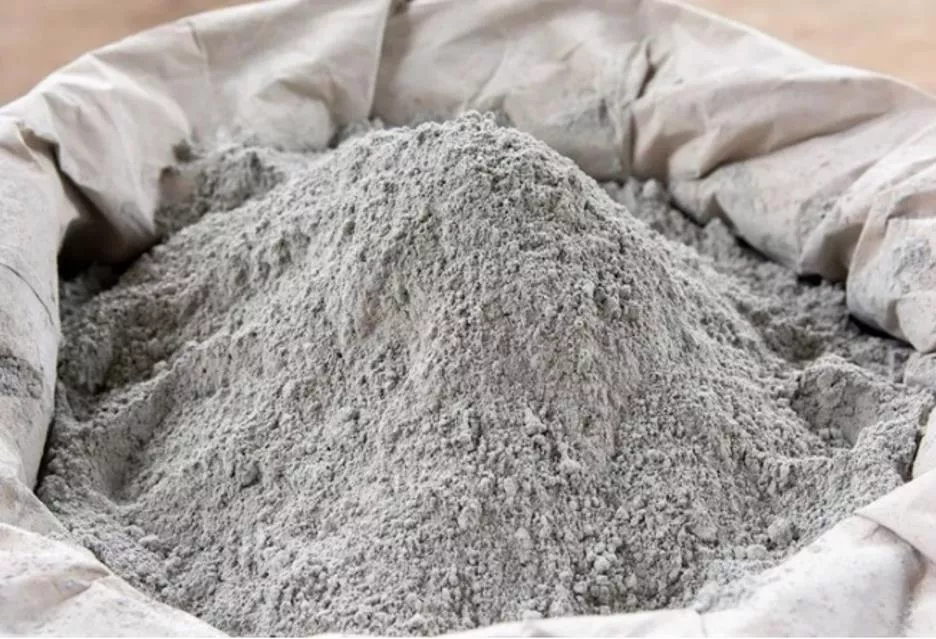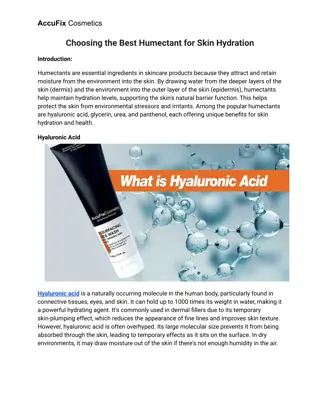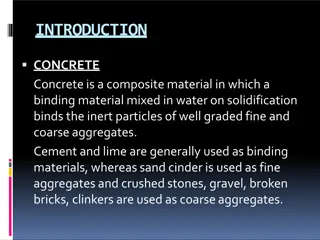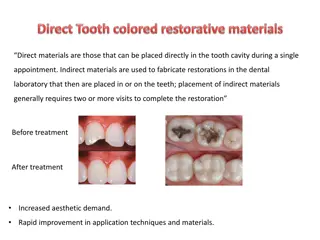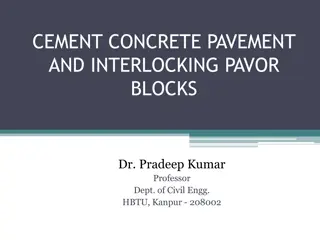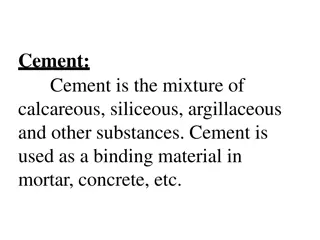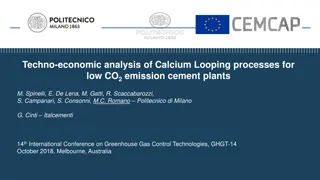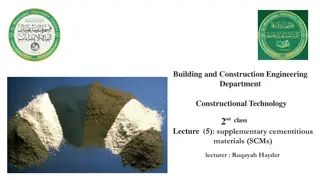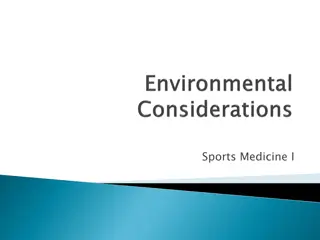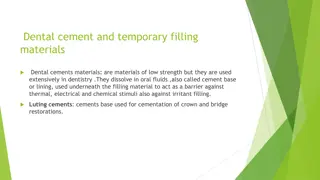Cement Hydration and Setting Process
In the construction field, it's crucial to grasp the process of cement hydration and setting. This involves the reactions within Portland cement as it becomes a bonding agent in a water-cement paste. The progression of hydration can be determined through various indicators like the amount of Ca(OH)2, heat evolved, specific gravity, and more. Pore structures play a vital role, with capillary and gel pores impacting the overall volume and porosity of the cement. Issues like false set, flash set, and stages of setting also influence the workability and quality of the cement mix.
Download Presentation

Please find below an Image/Link to download the presentation.
The content on the website is provided AS IS for your information and personal use only. It may not be sold, licensed, or shared on other websites without obtaining consent from the author.If you encounter any issues during the download, it is possible that the publisher has removed the file from their server.
You are allowed to download the files provided on this website for personal or commercial use, subject to the condition that they are used lawfully. All files are the property of their respective owners.
The content on the website is provided AS IS for your information and personal use only. It may not be sold, licensed, or shared on other websites without obtaining consent from the author.
E N D
Presentation Transcript
Building and Construction Engineering Department Constructional Technology 2 nd class Lecture (4): cement 2 lecturer : Ruqayah Hayder
Cement hydration The reactions by virtue of which Portland cement becomes a bonding agent take place in a water- cement paste. The main hydration products: Calcium Silicate Hydrates (C-S-H) Tricalcium aluminate hydrate (C3-A-H6) Ca(OH)2
Progress of hydration The progress of hydration of cement can be determined by different means: The amount of Ca(OH)2 in the paste. heat evolved by hydration. the specific gravity of the paste the amount of the of chemically combined water the amount of unhydrated cement present(using X-ray quantitative analysis). also indirectly form the strength of hydrated paste.
Capillary pores At any stage of hydration, the capillary pores represent that part of the gross volume which has not been filled by the products of hydration. Because these products occupy more than twice the volume of the original solid phase (i.e. cement)alone, the volume of the capillary system is reduce with the progress of hydration.
gel pores The gel pores occupy about 28 per cent of the total volume of gel. As the total volume of the gel increases with the progress of hydration, the total volume of gel pores also increase Porosity of 28 per cent means that the gel pores occupy a space equal to about one- third of the volume of the gel solids.
Setting Setting is the term used to describe the stiffening of the cement paste. Stages of setting: Initial Final
False Set False set is the name given to the abnormal premature stiffening of cement within a few minutes of mixing with water. Causes of false set It results from dehydration of the gypsum CaSo4.2H2O. (When it was mixed rapidly with hot clinker without cooling the later) into the anhydrite, CaSo4 or the hemihydrates 2CaSo4 .1/2H2O. This action decreases the workability of the mix. The remedy: is by prolonged mixing or remixing.
Flash set The reaction of pure C3A with water is very violent and leads to immediate stiffening of the paste, known as flash set. To prevent this from happening, gypsum (CaSO4.2H2O) is added to cement clinker.
Difference between false set & Flash set False set differs from flash set in that: no appreciable heat is evolved and remixing the cement paste without addition of water restores plasticity of the paste until it sets in the normal manner and without loss of strength.
Types of Portland cement There are five types of standard PC 1) Type I, Common or ordinary cement, OPC usually supplied unless another type is specified, and it frequently meets
Types of Portland cement 2) Type II Modified Portland cement C3A maximum limit is 8%, providing moderate resistance of sulfate attack Moderate heat of hydration (lees than for type I).
Types of Portland cement 3) Type III High-Early strength, (Rapid hardening cement RHC) o Obtained by finer grinding and larger proportions of C3A and C3S o Concrete made with type III cement has a three day compressive strength about equal to that made with type I at 7-day,and seven- day compressive strength equal to type I at 28 days, but ultimate strength is about the same.
Types of Portland cement 4) Type IV Low -heat cement (LHC) Proportions of C2S and C4AF are relatively high and percentages of C3A and C3S are low. Heat of hydration less than for the other types and develops more slowly Strengths development is slower. Used in massive dams, piers, footings, etc.
Types of Portland cement 5) Type V Sulfate resistance- cement. Very low C3A content, not more than 5%. Used in concrete exposed to soil alkali, sulfate ground water or sea water. Heat generation is slightly in excess of type IV.




